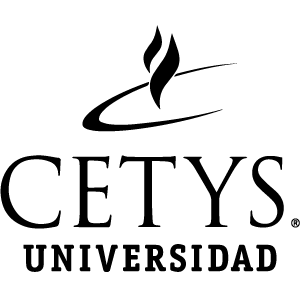https://repositorio.cetys.mx/handle/60000/1815| Campo DC | Valor | Lengua/Idioma |
|---|---|---|
| dc.contributor.author | Chávez García, Dalia H. | - |
| dc.contributor.author | Guzmán Jiménez, Mario H. | - |
| dc.contributor.author | Sánchez, Viridiana | - |
| dc.contributor.author | Cadena-Nava, Rubén D. | - |
| dc.date.accessioned | 2024-06-27T18:20:14Z | - |
| dc.date.available | 2024-06-27T18:20:14Z | - |
| dc.date.created | 2024-02-20 | - |
| dc.date.issued | 2024-06-25 | - |
| dc.identifier.uri | https://repositorio.cetys.mx/handle/60000/1815 | - |
| dc.description | 2024, 15, 755–766. | es_ES |
| dc.description.abstract | Abstract Water pollution, significantly influenced by the discharge of synthetic dyes from industries, such as textiles, poses a persistent global threat to human health. Among these dyes, methylene blue, particularly prevalent in the textile sector, exacerbates this issue. This study introduces an innovative approach to mitigate water pollution through the synthesis of nanomaterials using biomassderived carbon quantum dots (CQDs) from grape pomace and watermelon peel. Utilizing the hydrothermal method at temperatures between 80 and 160 °C over periods ranging from 1 to 24 h, CQDs were successfully synthesized. A comprehensive characterization of the CQDs was performed using UV–visible spectroscopy, Fourier-transform infrared spectroscopy, dynamic light scattering, Raman spectroscopy, and luminescence spectroscopy, confirming their high quality. The photocatalytic activity of the CQDs in degrading methylene blue was evaluated under both sunlight and incandescent light irradiation, with measurements taken at 20 min intervals over a 2 h period. The CQDs, with sizes ranging from 1–10 nm, demonstrated notable optical properties, including upconversion and down-conversion luminescence. The results revealed effective photocatalytic degradation of methylene blue under sunlight, highlighting the potential for scalable production of these cost-effective catalytic nanomaterials for synthetic dye degradation. Resumen La contaminación del agua, influenciada significativamente por la descarga de tintes sintéticos de industrias como la textil, plantea una amenaza global persistente para la salud humana. Entre estos tintes, el azul de metileno, especialmente frecuente en el sector textil, agrava este problema. Este estudio presenta un enfoque innovador para mitigar la contaminación del agua mediante la síntesis de nanomateriales utilizando puntos cuánticos de carbono (CQD) derivados de biomasa a partir de orujo de uva y cáscara de sandía. Utilizando el método hidrotermal a temperaturas entre 80 y 160 °C durante períodos que oscilaron entre 1 y 24 h, se sintetizaron con éxito los CQD. Se realizó una caracterización exhaustiva de los CQD mediante espectroscopia UV-visible, espectroscopia infrarroja por transformada de Fourier, dispersión dinámica de luz, espectroscopia Raman y espectroscopia de luminiscencia, lo que confirma su alta calidad. La actividad fotocatalítica de los CQD en la degradación del azul de metileno se evaluó tanto bajo luz solar como bajo irradiación con luz incandescente, con mediciones tomadas a intervalos de 20 minutos durante un período de 2 h. Los CQD, con tamaños que oscilan entre 1 y 10 nm, demostraron propiedades ópticas notables, incluida la luminiscencia de conversión ascendente y descendente. Los resultados revelaron una degradación fotocatalítica eficaz del azul de metileno bajo la luz solar, lo que destaca el potencial de producción escalable de estos nanomateriales catalíticos rentables para la degradación de tintes sintéticos. | es_ES |
| dc.description.sponsorship | https://www.beilstein-journals.org/bjnano/volumes/15 | es_ES |
| dc.language.iso | en_US | es_ES |
| dc.publisher | Beilstein-Institut. | es_ES |
| dc.relation.ispartofseries | ;15 | - |
| dc.rights | Atribución-NoComercial-CompartirIgual 2.5 México | * |
| dc.rights.uri | http://creativecommons.org/licenses/by-nc-sa/2.5/mx/ | * |
| dc.subject | Biomass | es_ES |
| dc.subject | Carbon dots | es_ES |
| dc.subject | Catalysis | es_ES |
| dc.subject | Methylene blue | es_ES |
| dc.subject | Photoluminiscence | es_ES |
| dc.title | Green synthesis of biomass-derived carbon quantum dots for photocatalytic degradation of methylene blue | es_ES |
| dc.title.alternative | Beilstein Journal of Nanotechnology | es_ES |
| dc.type | Article | es_ES |
| dc.description.url | https://doi.org/10.3762/bjnano.15.63 | es_ES |
| dc.format.page | 755–766 | es_ES |
| dc.subject.sede | Campus Ensenada | es_ES |
| Aparece en las colecciones: | Artículos de Revistas | |
| Fichero | Descripción | Tamaño | Formato | |
|---|---|---|---|---|
| Green synthesis of biomass-derived carbon quantum dots for photocatalytic degradation of methylene blue.pdf | 1.95 MB | Adobe PDF |  Visualizar/Abrir |
Este ítem está protegido por copyright original |
Este ítem está sujeto a una licencia Creative Commons Licencia Creative Commons


